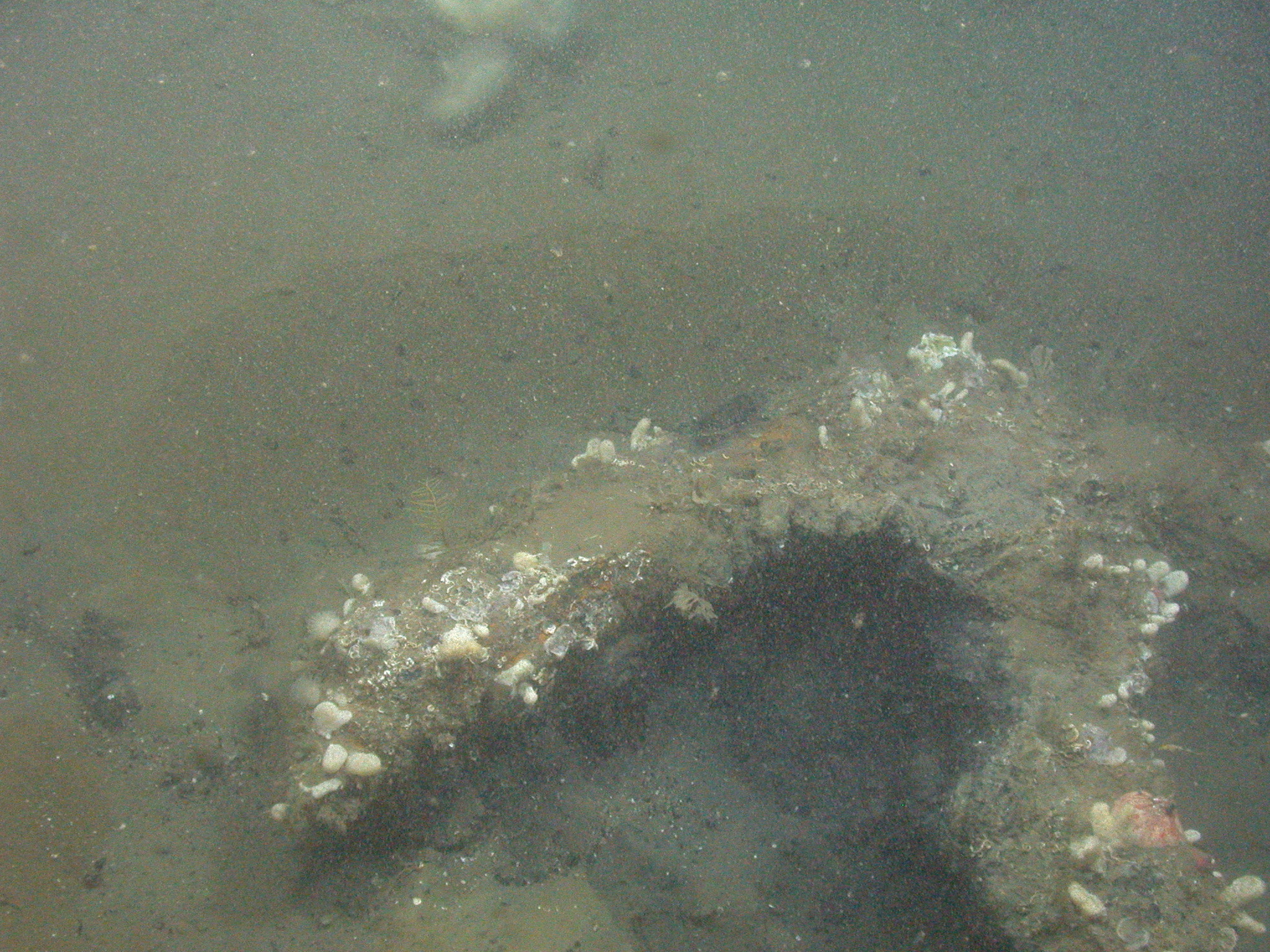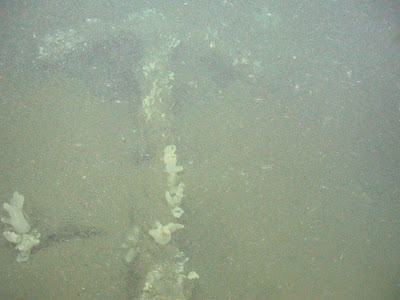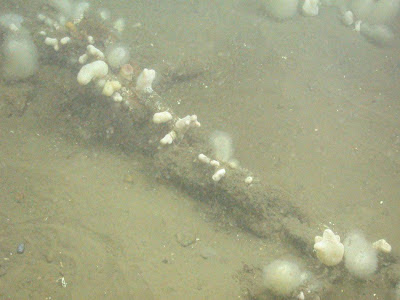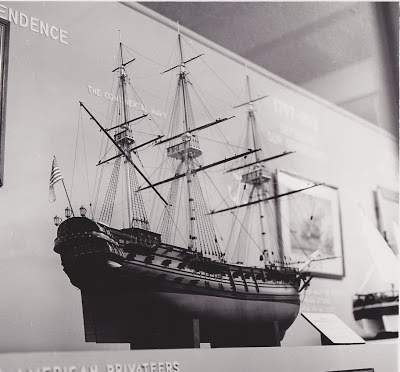Having recently returned from the first mission of 2013, I wanted to share some encouraging results. You may recall that at the end of the 2012 mission, the French Navy had located an interesting sonar target that we did not have time to further investigate. Finally, almost a year later, we got a better look at this fascinating site. The first object we identified was this large anchor.
Next was an area of wooden planking (below) that looked like it had recently been unburied, due to the lack of marine life growing on it. From this, it seems like the colonization rate of marine organisms takes a while (at least a year), since we had seen this planking on the sonar last year, so it must have been exposed even then.
Given that I am a marine biologist by training, I’m sometimes more interested in the stuff growing on the shipwrecks, as well as the critters that call the wrecks home. (And yes, sometimes we get distracted and will follow a lobster around for a minute.)
The weird-looking lump below is actually a concretion, which is a combination of rust, shell, marine organisms, calcium carbonate, and other materials that form a layer around iron objects as the iron oxidizes and reverts back to its natural state. Concretions are usually more irregularly-shaped than rocks, and this one gave a spike in the magnetometer data. I might have been seeing what I want to see, but upon closer inspection it looked to me like there were cannonball shapes in this one.
Perfectly linear shapes in nature are rare. That’s why we always hear that when someone is stranded on a deserted island, they make patterns or spell out words in the sand to indicate to aircraft that there are humans present. We apply the same theory beneath the sea, and look for things that appear unnatural in the seabed. The image below is of another likely concretion hiding some man-made object:
This white soft coral is most often the best clue to indicate buried objects. In the image below, there appears to be a long length of wood buried just under the surface, so there is more to this site than meets the eye. It is a mostly buried wooden shipwreck with some iron objects present.
So…in the thousands of sonar targets, and dozens of actual wrecks we’ve seen in 600 square miles of seabed over the past eight years, we’ve not seen anything with characteristics that even come close to the ones expressed by this site. If we could just figure out if cannons are present (buried or concreted and not easily identifiable), we could be on our way to something huge. If anyone reading this blog has access, or knows someone who has access to Autonomous vehicles with magnetometers, or reliable sub-bottom imagery technology, etc. please let me know (melissa.oceantechnology@gmail.com).
We have a summer expedition planned to learn more. The Ocean Technology Foundation’s ability to successfully manage and lead this search has been made possible by our wonderful donors and a lot of in-kind support, but we need support now more than ever. When we are able to prove that we’ve found the Bonhomme Richard, there will be opportunities for major publicity for our sponsors, and it will all happen fast! Join us in this great maritime quest and become a sponsor!














